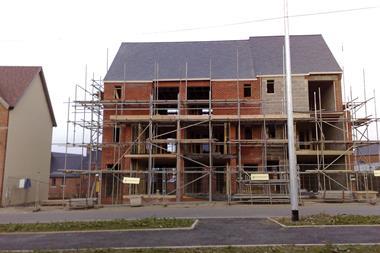Persimmon - many would agree the doyen of national housebuilders - shocked most seasoned observers when the group’s 2 November trading statement revealed that it was building a brick plant near Doncaster, which would supply a “substantial” number of its homes from spring 2017.

Cue panic among investors in brickmakers. Shares in Forterra, for instance, initially fell by some 6% on fears that the former Hanson Building Products, which had returned to the stock market in April, faced a new competitive front.
Then it emerged that Persimmon was going to produce concrete bricks. Now, I’m no aesthete, but my architectural chums figuratively curled their lips when I enquired by email what they thought of concrete. “Alright as paviours,” replied one, diplomatically. “Planners won’t like them,” retorted another.
Stock market traders are even less aesthetically inclined, but when the distinction was fully appreciated an hour or so later that it was not a clay plant, Forterra’s price recovered almost all of the lost ground.
It looks like Persimmon is out on a limb when it comes to its appetite for manufacturing
Well, rumours are now rippling around the building materials industry that Persimmon is considering manufacturing concrete roof tiles at the same site - or at least threatening to. Conversations between buyers at Persimmon and sales staff at a well-known roof tile company had, and I’m improvising here, gone along the lines of: “[Sound of air sucking through teeth] Phew, that price sounds a bit steep, mate… you’d better watch out, we could make them ourselves. Go away and sharpen your pencils.”
It looks like Persimmon - which also inherited the Space4 timber-frame fabrication business via the 2006 Westbury Homes acquisition - is out on a limb among its peers when it comes to its appetite for manufacturing. But it would appear that a number are looking seriously at taking a much more interventionist approach to their supply chains and this could alter how their homes are built and look.
‘Virtual’ sellers
A handful, I’m told, are attempting to set up their own ‘virtual’ builders’ merchants. These would be separate corporate entities that would go to various manufacturers and attempt to claim similar bulk discounts granted to bona fide merchants - but in this case, the materials would be exclusively for their own use.
Another ploy is sourcing direct for materials that are normally bought by specialist contractors on a ‘supply-and-fix’ basis. The housebuilder would take the discount, employing the contractor on a ‘fix-only’ basis.

Then there is what I hear could be the mother of all bulk discounts. One developer, it would appear, wants to mass-order two colours of tile to make huge savings, by committing to buy an entire plant’s output for weeks and possibly months in red, then the same again in grey. These savings could then be shared between manufacturer and builder. The only problem is that the company’s developments up and down the land could be instantly recognisable by their monotonous red and grey roofscapes, a bugbear not only potentially for planners but also customers.
If any of these initiatives do see the light of day, my guess is that the industry’s ‘middlemen’ will face more of a squeeze than the primary manufacturers, which are generally in more consolidated (and thus more powerful) markets than the housebuilders, and much more so than merchants or specialist contractors. That said, they are unlikely to sit back without a fight. Moreover, housebuilders’ forays into manufacturing - mainly steel or timber frames - have rarely been successful.
Why on earth, therefore, is Persimmon seemingly leading this charge down the “vertical integration” route? (The same question was vexing a former senior director of the company I chatted to a day or so later.)
The answer is undoubtedly margins. All the top developers have enjoyed a seemingly inexorable upwards march since 2009, as prices have risen by more than build costs on sites bought since then. However, the sector’s latest trading statements have hinted that both are now rising in tandem and sterling’s depreciation should put pressure on imported components. Moreover, there could be three years of latent land cost inflation to feed through results (the rising price of sites bought three, two and then one year ago will feed through to margins on houses sold, respectively, in one, two and three years).
This arithmetic is already putting downwards pressure on land prices. But this benefit won’t feed through to margins until the next wave of homes emerge in another three or four years. This is perhaps why some housebuilders are metaphorically, and literally, bricking it.
Alastair Stewart is an equities analyst and commentator






























No comments yet